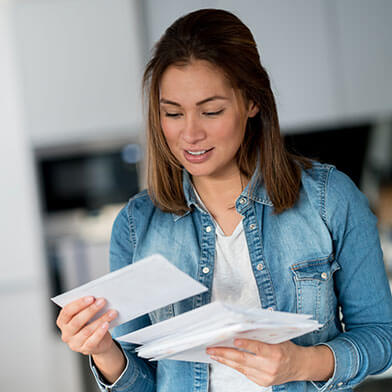Top Things to Know About the Third Stimulus Payment
March 12, 2021 • 4 minute read
Top Things to Know About the Third Stimulus Payment

The human toll in the wake of the coronavirus pandemic has been immeasurable, as has the economic impact. The U.S. government has responded with a third economic relief plan designed to blunt the financial pain the COVID-19 pandemic has created for Americans.
As part of the plan, direct payments will be dispersed by the Internal Revenue Service (IRS) to most Americans. The latest bill will also extend unemployment programs, provide aid for small businesses and state and local governments, increase tax credits for low- and middle-income families, and provide funding for COVID-19 vaccination and testing.
Who is eligible for a stimulus payment?
Individuals earning up to $75,000 or couples earning up to $150,000 in adjusted gross income, as well as their children and adult dependents, will qualify for the full $1,400 per person payment. Heads of household earning up to $112,500 are also eligible for the full payment amount.
Social Security, Social Security Disability Insurance, Railroad Retirement Board and Veterans Administration beneficiaries may be eligible even if they have not filed a 2019 or 2020 tax return. For details or to find out whether you qualify, visit the IRS’s website.
What should I do to get my payment?
If you filed a 2019 or 2020 tax return, you don’t need to take any further action unless your mailing address or direct deposit information has changed since you last filed.

If you aren’t required to file a tax return but are still eligible for the stimulus payments, you can visit the IRS's website for non-filers to see what steps you need to take to receive your payment.
How will the money arrive?
If you’ve provided your direct deposit information to the IRS in the last two years, you’ll receive your payment via direct deposit as long as the information is still current. If you have not provided your direct deposit information to the IRS, you’ll receive your payment in the form of a check or a prepaid debit card at the address used on your 2019 or 2020 tax return. You can provide your banking information for direct deposit or update your physical address at the IRS’s website if needed.
If you haven't filed a 2019 or 2020 tax return, visit the IRS website for instructions on how to receive your payment.
Stimulus payments are being issued in waves, so don't be concerned if someone you know receives one before you do. The IRS has also released an online tracking tool that lets you check the status of your stimulus check.

Beware of COVID-19 stimulus scams.
The Washington State Attorney General’s Office has warned of scams related to COVID-19 stimulus payments. The attorney general notes that the federal government will not ask to confirm your personal or banking details by email, phone or text message, or demand a “processing fee” to receive your stimulus payment. And it advises people not to click on links in email or text messages about COVID-19 stimulus payments or provide personal information.
Look for a letter from the IRS.
Fifteen days after dispersing your payment, the IRS will mail a letter to your last known address. The letter will note how the payment was made and give instructions on how to report any failure to receive the payment. The IRS advises that if you receive a letter that you’re not sure is legitimate, you should visit the IRS website to protect against scams.
Planning for your stimulus check
We’ve created a tool for you to get the most out of your stimulus check or tax refund, whether for emergent needs or other uses. Make your plan in less than two minutes.
